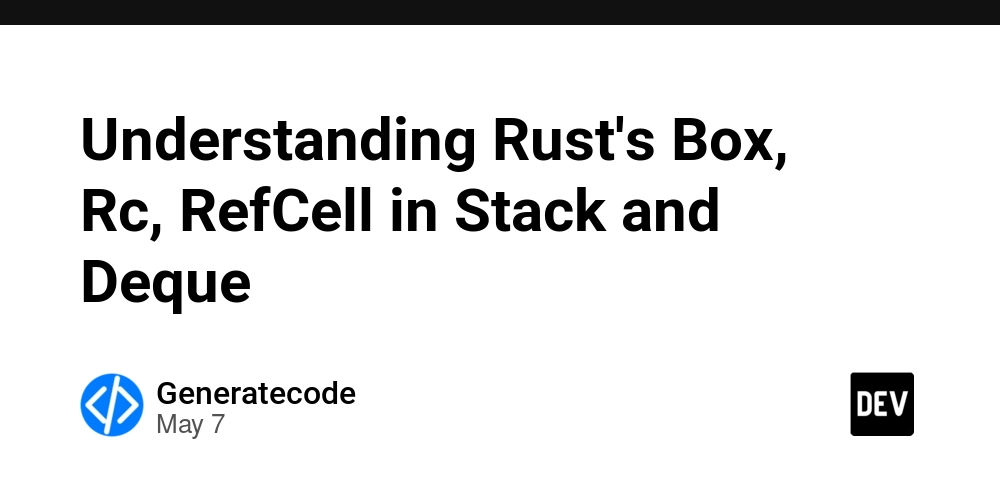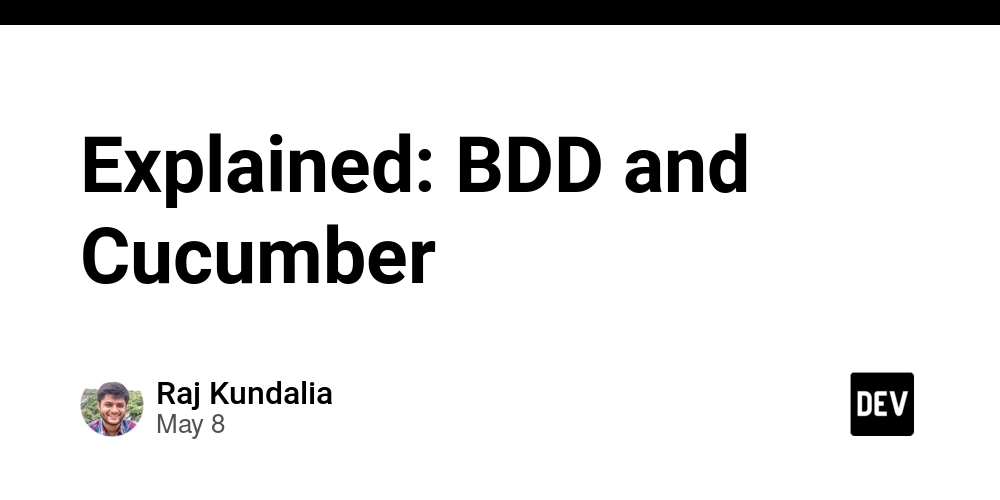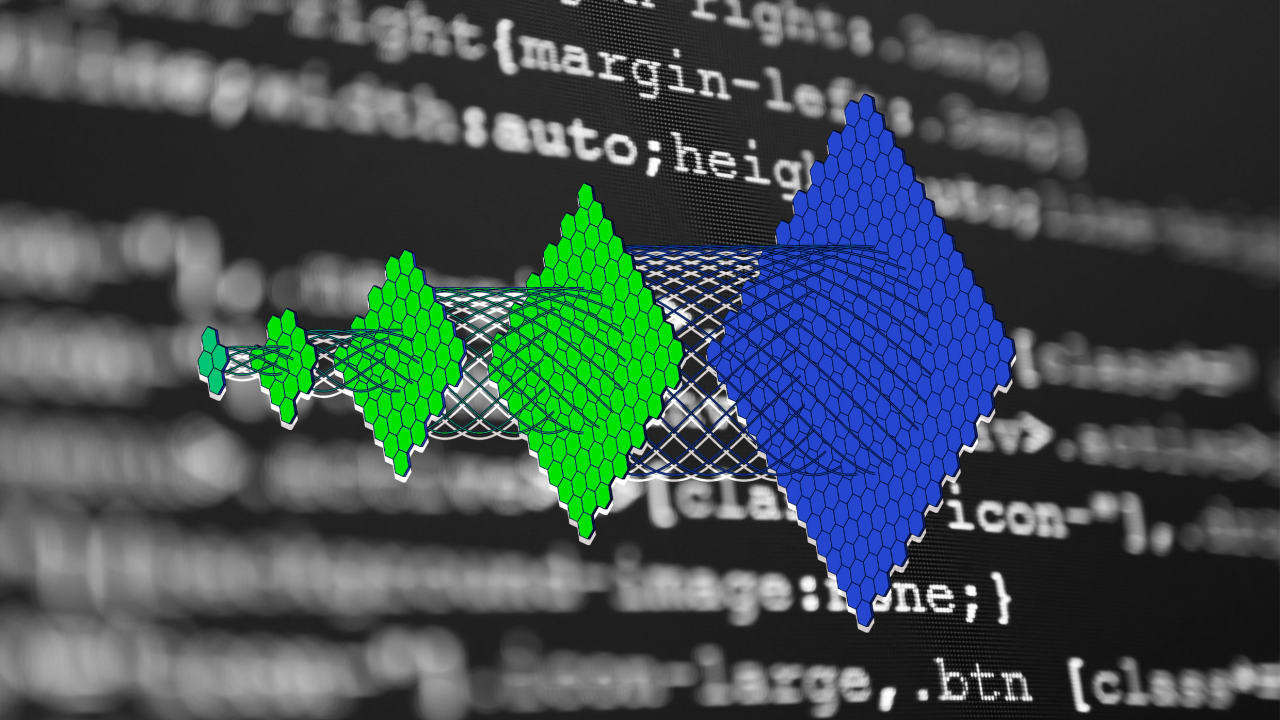Understanding Rust's Box, Rc, RefCell in Stack and Deque
Introduction to Rust Smart Pointers In Rust, managing memory safely and efficiently is crucial for building robust applications. When working on course material that demonstrates the use of Rust’s smart pointers like Box, Rc, and RefCell, you may encounter unique scenarios, especially when implementing structures like linked lists. This article will explore a singly-linked stack and a doubly-linked deque, elucidating why the default drop implementation in Rust behaves differently for these structures. Why Choose Box, Rc, and RefCell? Before diving deep into the examples, let’s clarify the usage of each type. Box: This is a smart pointer that provides ownership of heap-allocated data. It enables recursive data structures. Rc (Reference Counted): This type allows multiple ownership of data; it keeps track of the number of references to the data and cleans up when no references exist. RefCell: This allows mutable borrowing at runtime, enabling interior mutability by keeping track of borrow counts. These types are essential in building safe and efficient data structures in Rust. Singly-Linked Stack Implementation Let’s look at the code for a basic implementation of a singly-linked stack in Rust: struct Stack { head: Option, size: usize, } struct StackNode { elem: E, next: Option, } Understanding Recursive Drop in Singly-Linked Stack The trouble with the default drop implementation in the Stack arises from its recursive nature. When the stack is large, this can lead to a stack overflow due to deep recursion. Here's why: When a Stack goes out of scope, its head drops its Box, which then calls drop on StackNode, leading to the next node’s drop. This continues recursively until all nodes are dropped. For large stacks, this recursion builds up in the call stack until it exceeds the limit, resulting in an overflow. To mitigate this issue, you can implement a custom Drop trait that iteratively drops nodes rather than recursively: impl Drop for Stack { fn drop(&mut self) { let mut current = self.head.take(); while let Some(node) = current { current = node.next; } } } Doubly-Linked Deque Implementation Now, let's present the code for a doubly-linked deque: struct Deque { head: Option, tail: Option, size: usize, } struct DequeNode { next: Option, prev: Option, elem: E, } Why Does the Deque’s Drop Implementation Work? The drop implementation for the doubly-linked deque effectively uses Rc and RefCell, which play a significant role in managing memory: Reference Counting: Each Rc manages its own reference count, decrementing when an instance goes out of scope. This means nodes are only dropped when the last reference to them is dropped, avoiding recursive calls seen in the singly-linked stack. Interior Mutability: The RefCell allows interior mutability, meaning you can borrow and mutate DequeNodes without restrictions on the borrowing rules imposed at compile-time. This efficient management of memory elements prevents stack overflow and results in safe and effective memory release, even for larger data structures. Conclusion In summary, using Box, Rc, and RefCell efficiently can significantly impact memory performance and safety. The implementation of a singly-linked stack requires special care due to its recursive drop nature, while the doubly-linked deque benefits from reference counting and interior mutability. By understanding these smart pointers, you can effectively manage memory in Rust's data structures. Frequently Asked Questions 1. What is the role of Box in Rust? Box allows you to allocate data on the heap while maintaining ownership in a safe manner. 2. When should I use Rc and RefCell? Use Rc when you need multiple ownership, and RefCell when you need mutable access to an immutable data structure at runtime. 3. How can I prevent stack overflow in Rust? Avoid recursive implementations of drop by manually iterating through linked nodes or restructuring your data flow.

Introduction to Rust Smart Pointers
In Rust, managing memory safely and efficiently is crucial for building robust applications. When working on course material that demonstrates the use of Rust’s smart pointers like Box, Rc, and RefCell, you may encounter unique scenarios, especially when implementing structures like linked lists. This article will explore a singly-linked stack and a doubly-linked deque, elucidating why the default drop implementation in Rust behaves differently for these structures.
Why Choose Box, Rc, and RefCell?
Before diving deep into the examples, let’s clarify the usage of each type.
-
Box: This is a smart pointer that provides ownership of heap-allocated data. It enables recursive data structures. -
Rc(Reference Counted): This type allows multiple ownership of data; it keeps track of the number of references to the data and cleans up when no references exist. -
RefCell: This allows mutable borrowing at runtime, enabling interior mutability by keeping track of borrow counts.
These types are essential in building safe and efficient data structures in Rust.
Singly-Linked Stack Implementation
Let’s look at the code for a basic implementation of a singly-linked stack in Rust:
struct Stack {
head: Option>>,
size: usize,
}
struct StackNode {
elem: E,
next: Option>>,
}
Understanding Recursive Drop in Singly-Linked Stack
The trouble with the default drop implementation in the Stack arises from its recursive nature. When the stack is large, this can lead to a stack overflow due to deep recursion. Here's why:
- When a
Stackgoes out of scope, itsheaddrops itsBox, which then callsdroponStackNode, leading to the next node’sdrop. This continues recursively until all nodes are dropped. - For large stacks, this recursion builds up in the call stack until it exceeds the limit, resulting in an overflow.
To mitigate this issue, you can implement a custom Drop trait that iteratively drops nodes rather than recursively:
impl Drop for Stack {
fn drop(&mut self) {
let mut current = self.head.take();
while let Some(node) = current {
current = node.next;
}
}
}
Doubly-Linked Deque Implementation
Now, let's present the code for a doubly-linked deque:
struct Deque {
head: Option>>>,
tail: Option>>>,
size: usize,
}
struct DequeNode {
next: Option>>>,
prev: Option>>>,
elem: E,
}
Why Does the Deque’s Drop Implementation Work?
The drop implementation for the doubly-linked deque effectively uses Rc and RefCell, which play a significant role in managing memory:
-
Reference Counting: Each
Rcmanages its own reference count, decrementing when an instance goes out of scope. This means nodes are only dropped when the last reference to them is dropped, avoiding recursive calls seen in the singly-linked stack. -
Interior Mutability: The
RefCellallows interior mutability, meaning you can borrow and mutateDequeNodes without restrictions on the borrowing rules imposed at compile-time.
This efficient management of memory elements prevents stack overflow and results in safe and effective memory release, even for larger data structures.
Conclusion
In summary, using Box, Rc, and RefCell efficiently can significantly impact memory performance and safety. The implementation of a singly-linked stack requires special care due to its recursive drop nature, while the doubly-linked deque benefits from reference counting and interior mutability. By understanding these smart pointers, you can effectively manage memory in Rust's data structures.
Frequently Asked Questions
1. What is the role of Box in Rust?
Box allows you to allocate data on the heap while maintaining ownership in a safe manner.
2. When should I use Rc and RefCell?
Use Rc when you need multiple ownership, and RefCell when you need mutable access to an immutable data structure at runtime.
3. How can I prevent stack overflow in Rust?
Avoid recursive implementations of drop by manually iterating through linked nodes or restructuring your data flow.









































































































































































![[The AI Show Episode 146]: Rise of “AI-First” Companies, AI Job Disruption, GPT-4o Update Gets Rolled Back, How Big Consulting Firms Use AI, and Meta AI App](https://www.marketingaiinstitute.com/hubfs/ep%20146%20cover.png)

























































































































![[DEALS] The Premium Python Programming PCEP Certification Prep Bundle (67% off) & Other Deals Up To 98% Off – Offers End Soon!](https://www.javacodegeeks.com/wp-content/uploads/2012/12/jcg-logo.jpg)















































.jpg?#)


































































-Mafia-The-Old-Country---The-Initiation-Trailer-00-00-54.png?width=1920&height=1920&fit=bounds&quality=70&format=jpg&auto=webp#)
-Nintendo-Switch-2---Reveal-Trailer-00-01-52.png?width=1920&height=1920&fit=bounds&quality=70&format=jpg&auto=webp#)























_Aleksey_Funtap_Alamy.jpg?width=1280&auto=webp&quality=80&disable=upscale#)
_Sergey_Tarasov_Alamy.jpg?width=1280&auto=webp&quality=80&disable=upscale#)















































































































![Apple Shares Official Trailer for 'Stick' Starring Owen Wilson [Video]](https://www.iclarified.com/images/news/97264/97264/97264-640.jpg)


![Beats Studio Pro Wireless Headphones Now Just $169.95 - Save 51%! [Deal]](https://www.iclarified.com/images/news/97258/97258/97258-640.jpg)



































































































